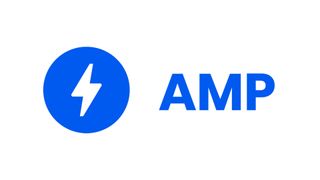What is AMP?
If you're new to website building, you might be wondering: what is AMP? Read our explainer to find out

What is AMP?
AMP is a technology created by Google that speeds up internet browsing for users on mobile devices. It achieves this through creating “AMP pages” on a website. These pages rely far less on third-party code, scripts, widgets, and other resources.
This means AMP-enabled websites are far quicker than regular web pages—that’s very important if a mobile user has limited bandwidth, a slow connection, or strict data allowances. That speed makes a big difference. Slower webpages increase bounce rates, and the likelihood your visitor will stick around and buy from you. AMP pages can increase conversions and sales.
Google will often prioritise faster webpages over slower webpages when showing search results to mobile users. When you’re building a website, it’s important to understand how the best website builders handle AMP pages.
Although AMP pages are useful in many circumstances, there are also some drawbacks for certain types of web functionality like ecommerce, interactive widgets, payment processing, or advertising. You will need to balance speed and convenience for mobile users with search engine placement and third-party website features to decide the right mix for your website or online store.
A quick side note: AMP used to be an acronym for “Accelerated Mobile Pages”, but has since been formally renamed to AMP, as the technology goes beyond just accelerating pages.
What does AMP do?

AMP creates faster webpages for mobile users. Website builder software achieves this by automatically creating an alternative AMP-enabled webpage for each regular webpage on your website. If your website is AMP-enabled, then your AMP pages are more likely to show up in web searches from a mobile device.
When a mobile user clicks on an AMP search result, your website builder will automatically serve up the AMP page. You can also set up your own URL redirects to direct mobile users to AMP versions of your standard web pages.
Get the ITPro. daily newsletter
Receive our latest news, industry updates, featured resources and more. Sign up today to receive our FREE report on AI cyber crime & security - newly updated for 2024.
AMP focuses on one aspect of mobile browsing only: speed.
The speed of your website really matters to mobile users. Even an extra second or two spent downloading a page can significantly increase bounce rates and make people leave your website. But, AMP pages do require some trade-offs—it’s important to understand those when you’re building an ecommerce or small business website.
Differences between AMP pages and standard webpages
The main differences between AMP pages and regular webpages are:
- AMP pages use fewer resources: AMP insists on using minimal amounts of HTML, CSS, Javascript, and other coding languages to create webpages
- AMP pages are for mobile browsers only: AMP pages are normally served up to people browsing on a phone or other mobile device; users browsing on a desktop or laptop will see regular website pages instead of AMP pages
- Google preloads AMP pages to make them even faster: Google will preload AMP pages in the background of a user’s browser, which makes them appear to render almost instantly when a user clicks on them
- AMP pages are strict in what they allow: AMP rules create certain restrictions on the type, size, and amount of code, images, and other resources allowed for AMP pages; this means AMP pages cannot include third-party Javascript code
- AMP pages do not contribute to your SEO: AMP pages are stored on the web servers of popular search engines, which means they do not contribute to the SEO of your regular website, such as through backlinks or similar
- Google Analytics is less reliable on AMP pages: Google Analytics does not work as well on AMP pages as it does on regular web pages
- AMP pages may not be as functional as regular webpages: Due to restrictions on code like Javascript, interactive elements like “Call to Action” or “Buy” buttons, payments, the user interface, and similar widgets may not perform identically to regular pages
How the best website builders use AMP
When you’re creating a business website, the best website builders can often create AMP pages to create a better browsing experience for mobile users. Here’s how the most popular website builders handle AMPs.
Wix and AMP

Wix lets you add AMP pages to your blog through a simple toggle in your user preferences as follows:
- Go to "SEO Tools" in your site's dashboard
- Click "SEO Patterns"
- Click "Edit Pattern" next to "Blog Posts"
- Click "Edit" next to AMP
- Click the toggle next to "Enable AMP" on your blog posts
Wix does not currently create AMP pages for pages outside a blog, although it is a feature request.
Shopify and AMP

Shopify does not provide native support for AMP pages. Instead, Shopify users can add AMP functionality to their web stores through Shopify marketplace applications.
Some AMP applications may require one-off or ongoing fees. They will also vary in how they handle AMP pages, so we recommend reading the specifications for each one. Popular options include:
Squarespace and AMP

Squarespace lets you add AMP pages to your blog. You set up AMP as follows:
- You can enable AMP in the Blogging panel
- In the Home menu, slick "Settings", and then click "Blogging"
- Scroll down to "Accelerated Mobile Pages"
- Check "Use AMP"
Squarespace does not currently create AMP pages for pages outside a blog.
Weebly and AMP

Weebly does not currently support AMP pages.
BigCommerce and AMP

BigCommerce does support AMP pages, but only on certain themes. Once you have installed an AMP-ready theme, you would go to "Advanced Settings" then "Google AMP" in your BigCommerce installation, and select the page types you would like to enable. Currently, you can enable AMP for category and product pages.
Features and benefits of AMP

AMP pages can provide significant advantages when used in the right way.
They significantly reduce how long it takes to render and display websites on mobile devices. An AMP page can render in one second or less, compared to four seconds or more for regular webpages. This means users are more likely to read and interact with AMP pages.
All other ranking factors being equal, Google will prioritise faster websites over slower ones—especially for mobile users. Because AMP pages create the fastest mobile browsing experience, they will tend to get better placements in search engine results pages.
There’s a very strong correlation between page loading times and bounce rates—when a user visits one page on your website and immediately leaves without interacting further. Google found that 40% of consumers will leave a website that takes more than three seconds to load.
The faster your website loads, the more likely a visitor is to continue to interact and buy from you. Simplifying pages, for example through AMP, also increases conversion rates. 70% of consumers say that a slow website reduces their likelihood of purchasing. A one-second delay can result in a 7% drop in conversions.
Several website builders automatically create AMP pages for certain content types. You can also find specific tools that will create AMP pages. This makes it quick and easy to build AMP pages in a website builder without too much effort on your part. If you’re not using a website builder, AMP page creation can be challenging.
AMP concerns and lack of functionality

Although AMP webpages provide some significant benefits, they’re not perfect. That’s because of their limitations on things like types of code, embedding images and media, third-party Javascript, and other aspects of the website user experience.
AMP capabilities are expanding. The technology is supporting more types of content, with recent updates focusing on the ecommerce experience. Much of the functionality of regular webpages can now be duplicated in AMP through specific code elements.
That said, it’s important to understand that AMP is not compatible with all widgets and interactive experiences on a website. If you’re using AMP on your website, please check that it can meet all of your needs, with particular focus on the following areas:
- Large and multiple images: AMP may limit the number and size of images on your webpages
- Video and audio content: AMP pages may not embed or support certain types of media files, such as video or audio
- Product and category pages: AMP pages can limit the way you display products and categories in an ecommerce store
- Shopping cart and checkout options: AMP pages may not allow users to interact with shopping carts or checkouts in your ecommerce store
- Payment options: AMP pages may not allow for in-page payment processing
- Tracking and analytics: AMP pages do not report visitors and website usage in the same way as regular pages
- Advertising: Adverts are limited on AMP pages
- CSS styling: AMP pages do render CSS differently to regular webpages, which can impact the user experience, navigation, and other visible elements of your website
- Third-party widgets: AMP pages do not display widgets that operate via third-party code
- Other areas: AMP pages may not properly present, display, or interact with other elements of a regular website
Some of these issues are already being solved through special AMP coding. Others will be supported in the future. It’s important to review how AMP pages may impact your website usability before implementing them.
In general, AMP pages are much better suited to blogs, news stories, and informational content rather than ecommerce and interactive content.
FAQs about AMPs
What is an AMP page?
An AMP page is a lightweight version of a regular webpage designed specifically for mobile browsers. AMP pages load much more quickly than regular webpages, although AMP pages do not provide all of the features and functionality of a regular webpage.
Faster web browsing is very important to mobile users. Slow load speeds can negatively impact bounce rate, conversions, sales, and revenue. AMP pages help to avoid these issues.
AMP pages will not contribute to a site’s regular search engine optimisation. Additionally, AMP pages have limited functionality which may impact the features and usability of an AMP website.
Several website builders will create AMP pages automatically when you create regular web pages. Alternatively, you can also create AMP pages using specialist building and coding tools, although these often require some technical knowledge.
Main AMP takeaways
- AMP creates faster web pages for mobile users, which can drive higher user engagement, especially for blogs and news stories
- Faster webpages can also lead to lower bounce rates and higher conversions and sales
- AMP is not a perfect solution, and some website features will work differently or won’t work at all on AMP pages
- Some website builders will automatically create AMP pages for certain types of content: otherwise, you may need to build AMP pages yourself, which can be difficult and time-consuming
- It’s very important to understand how your AMP pages will function and support your business goals
Further reading on website builders
If you want to build a website, here’s a guide to starting a website from scratch. Wondering whether you need a website for your small business? Look at why you need one; see some top tips for creating a small business website; explore the top tools needed; and discover the foundations of a successful small business site.
Learn how to choose a domain name for your website, and why domain privacy is important, and what it means for your business. It's also worth looking into the best anonymous hosting solutions to protect your privacy.
Paul is a highly experienced professional writer who creates extensively researched, expert, in-depth guides across business, finance, and technology.
Boasting over 20 years of business experience working across large corporations, Paul started his own business in 2006. This gives him a unique, first-hand understanding of the challenges businesses and entrepreneurs face.
Paul loves the challenge of taking complex subjects and breaking them down so they are easily understood. He specializes in creating content spanning a variety of formats, including website copy, blogs, knowledge bases, white papers, support guides, tutorials, and in-depth articles.





